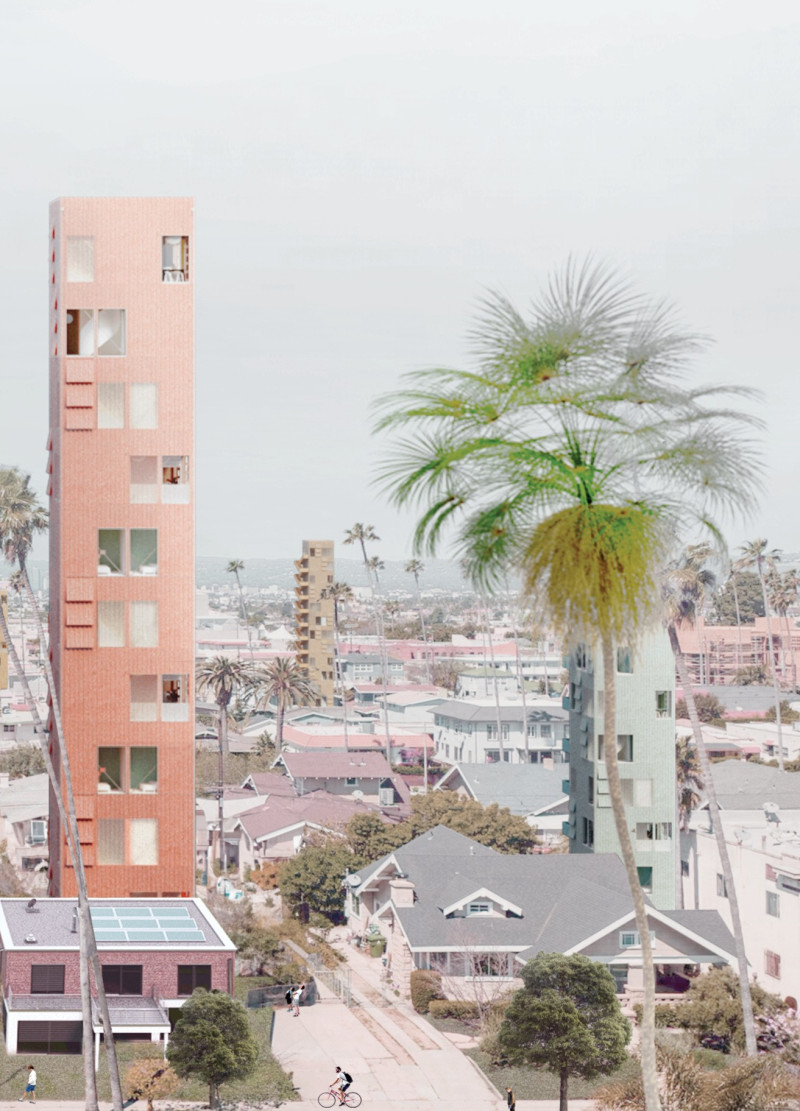5 key facts about this project
The architecture serves a multi-faceted function, accommodating a variety of uses tailored to meet contemporary needs. This includes community spaces, private offices, and leisure areas, which are integrated into the overall design to foster interaction among users. The design embraces the concept of accessibility, ensuring that different segments of the community can utilize the space effectively. The layout is intuitive, facilitating an organic flow from one area to another, and creating a cohesive experience throughout the building.
One notable aspect of this project is its commitment to sustainability and the use of environmentally friendly materials. A careful selection of resources reflects this commitment, showcasing a range of materials such as reinforced concrete, natural timber, glass, and steel. Each material has been chosen not only for its functional properties but also for its aesthetic contribution to the overall atmosphere of the building. The combination of concrete and timber provides a striking visual contrast while enhancing durability and energy efficiency. The extensive use of glass allows for natural light penetration, creating warm, inviting interiors while reducing reliance on artificial lighting.
The design embraces a unique approach to form and structure, showcasing clean lines and open spaces that are both practical and visually appealing. This project employs a modern architectural language, characterized by minimalist design principles that focus on simplicity and elegance. The building's exterior is marked by strategically placed overhangs and terraces, which provide shade and reduce heat gain, showcasing an understanding of local climate conditions. This design strategy enhances the building's energy performance, making it a fitting model for future architectural projects looking to balance aesthetics and efficiency.
Landscaping plays an essential role in the project, with thoughtfully designed outdoor spaces complementing the overall architecture. The integration of green roofs and landscaped terraces not only enhances the visual appeal but also contributes to biodiversity and creates micro-ecosystems that benefit urban wildlife. The connection between indoor and outdoor spaces encourages occupants to engage with nature, promoting a sense of well-being and community connection.
Details such as carefully curated flooring options, energy-efficient fixtures, and high-performance glazing have been meticulously considered to ensure that every element serves a purpose while contributing to the overall harmony of the design. The interactions between various materials and spatial configurations create an environment that is both functional and inviting, enhancing the user experience.
This project highlights the importance of a design philosophy that prioritizes inclusivity and sustainability while also responding to the behavioral needs of its occupants. The architecture stands as a testament to what can be achieved when thoughtful design principles are applied with a clear understanding of context and function. It encourages a shift toward more community-oriented designs, wherein spaces are created not only for their aesthetic value but also for their ability to foster social connections.
For those interested in exploring this project further, it is recommended to review the architectural plans, architectural sections, and architectural designs that offer deeper insights into its innovative features and thoughtful design ideas. The project serves as a quintessential example of contemporary architecture that embraces its environment, providing a model for future developments in urban settings.























